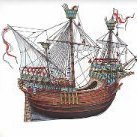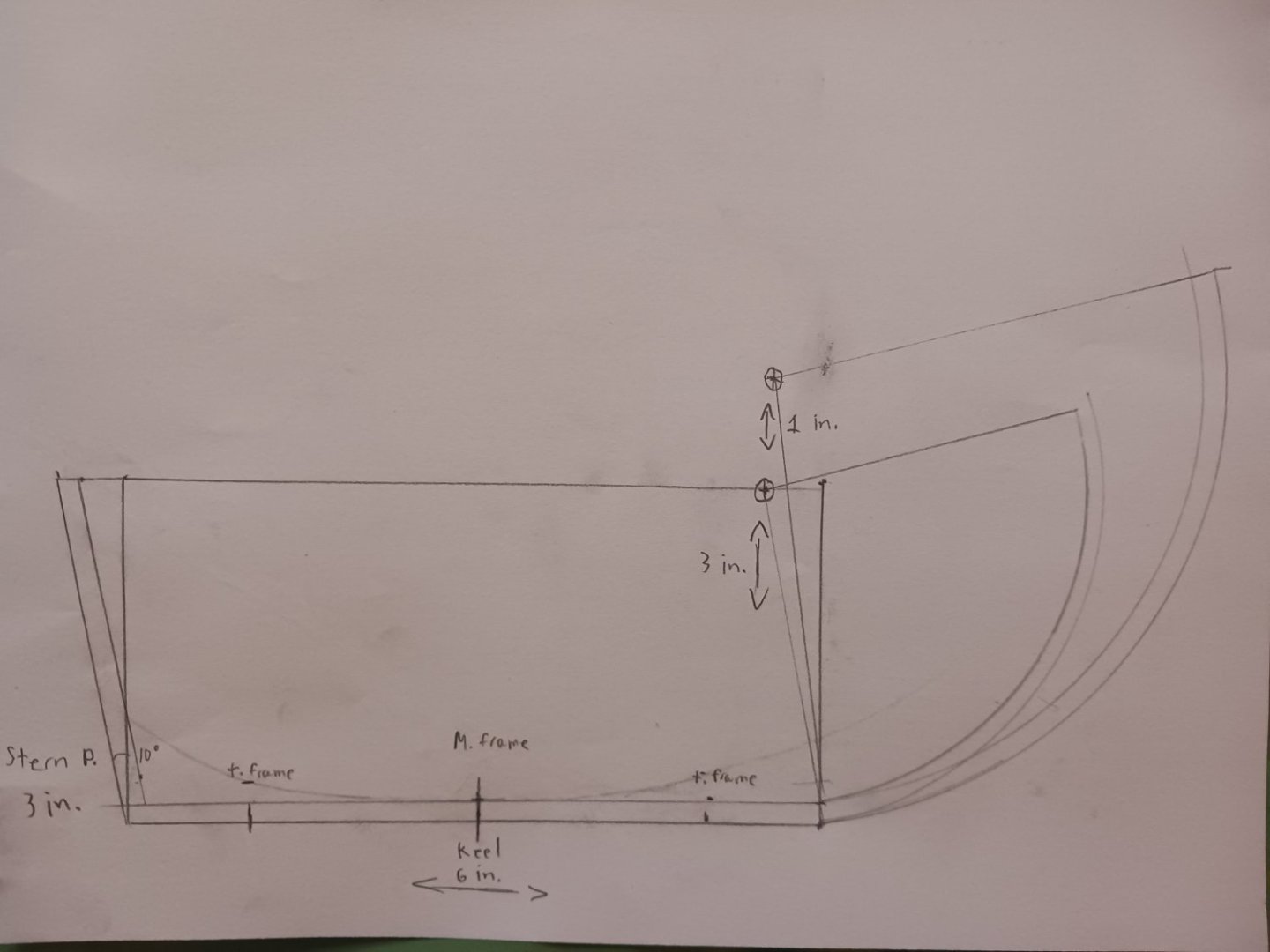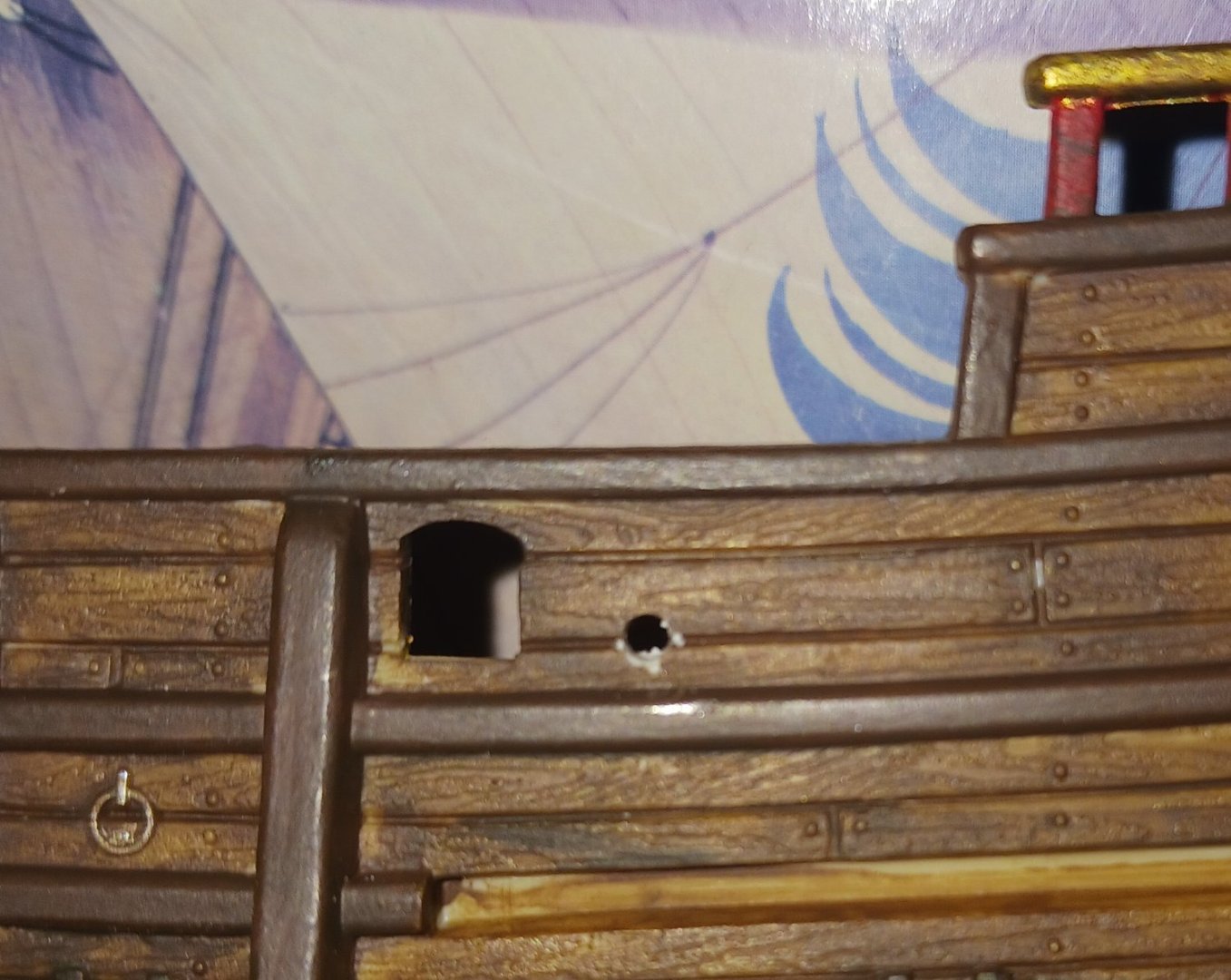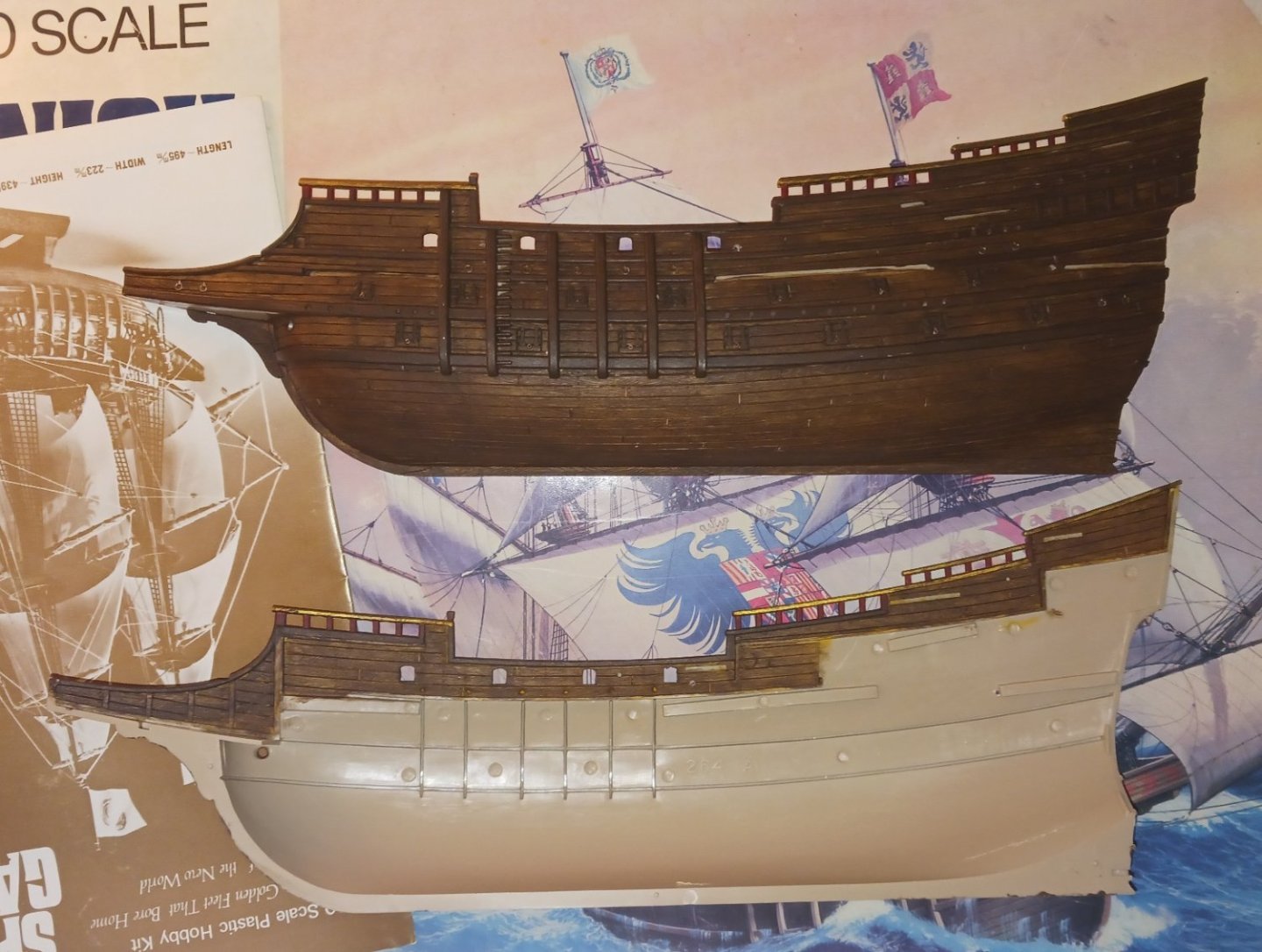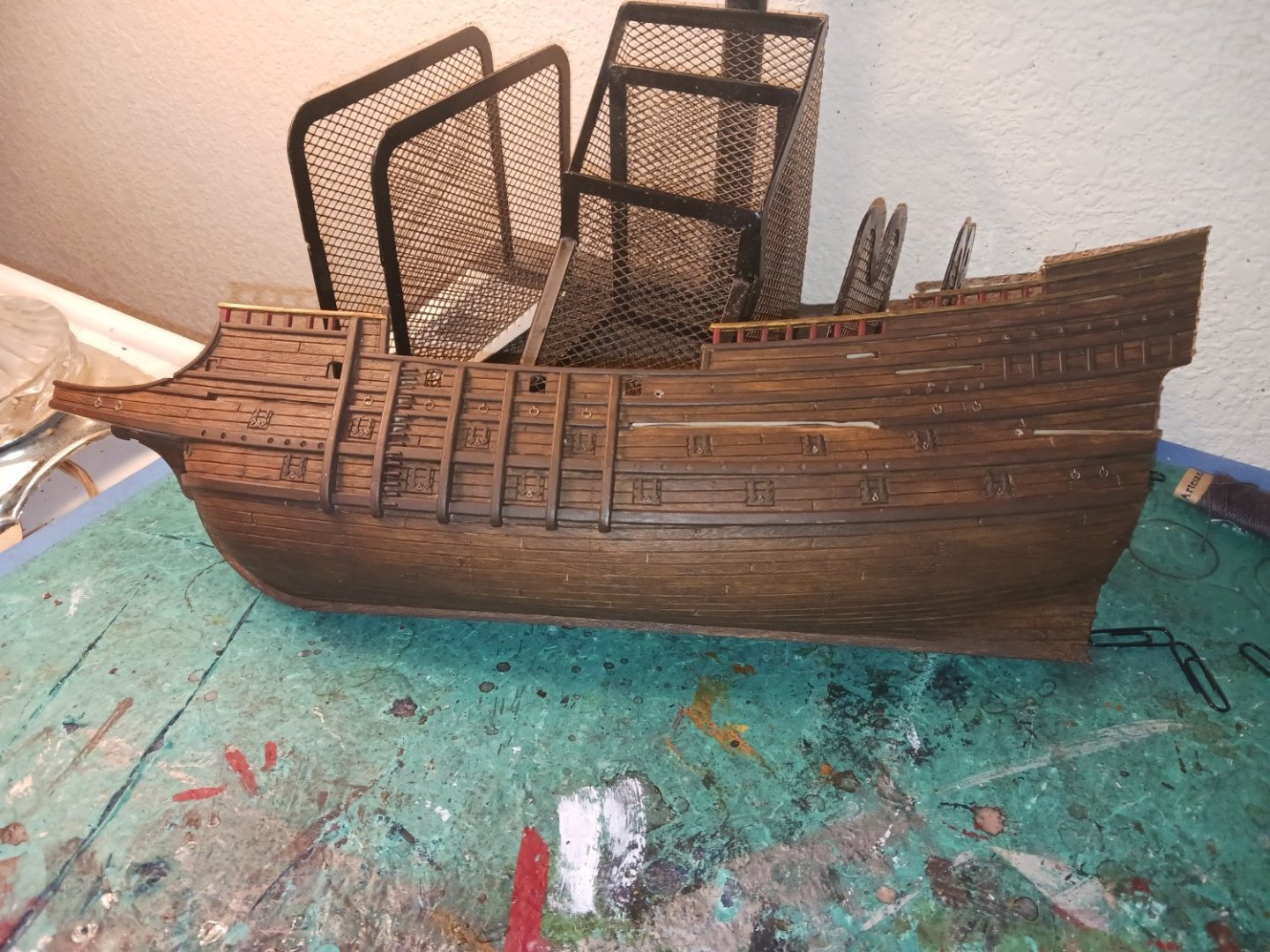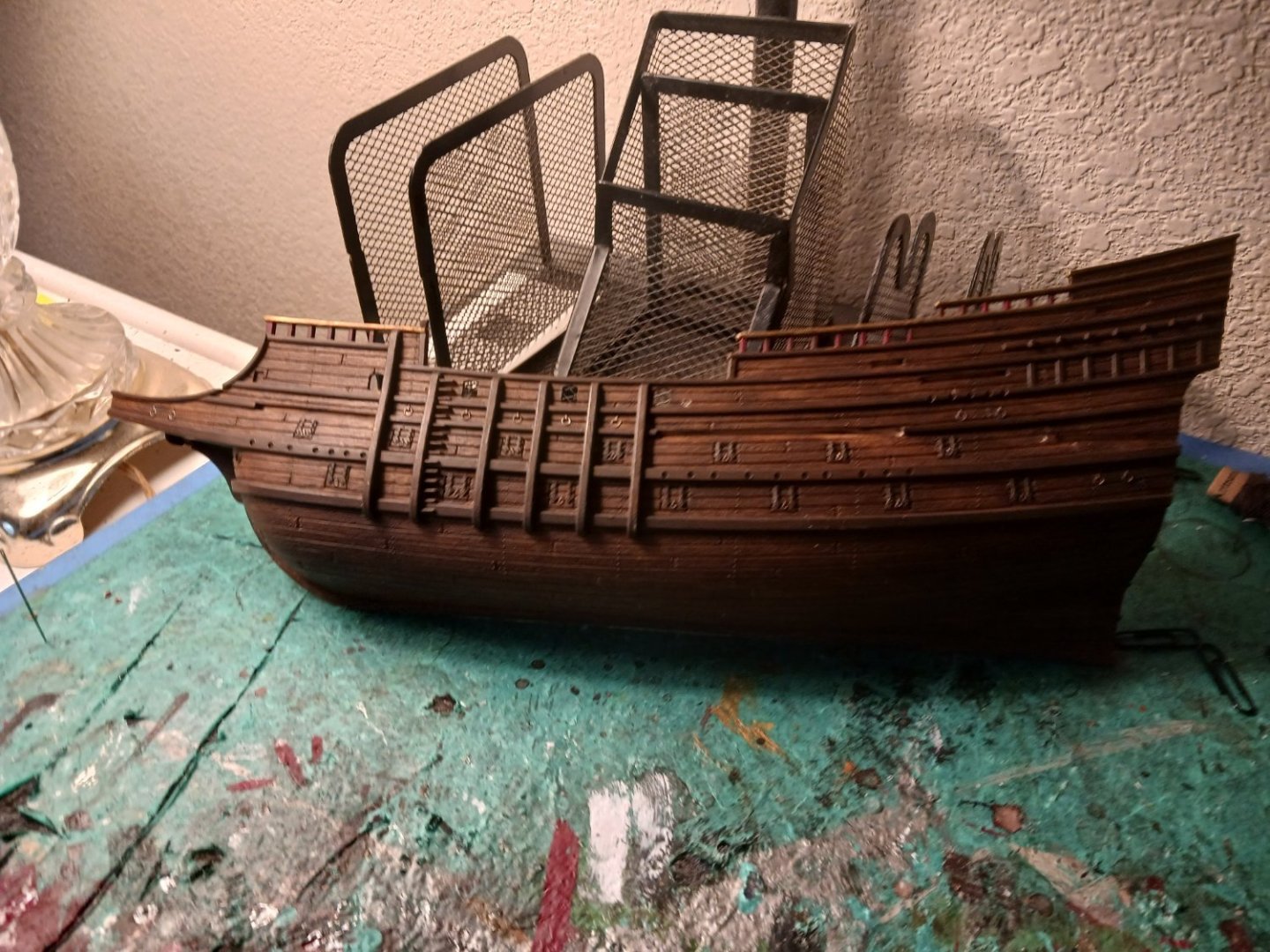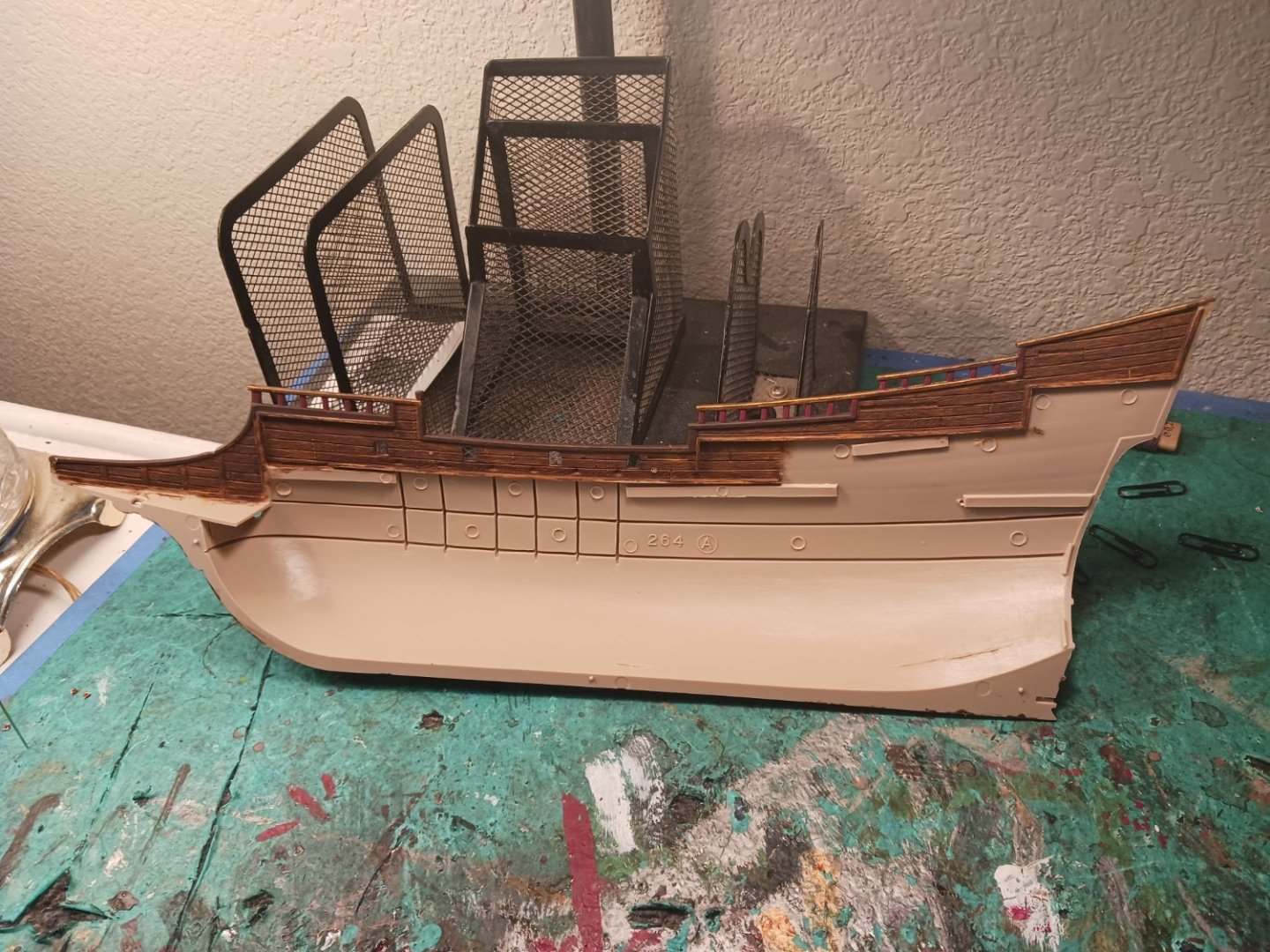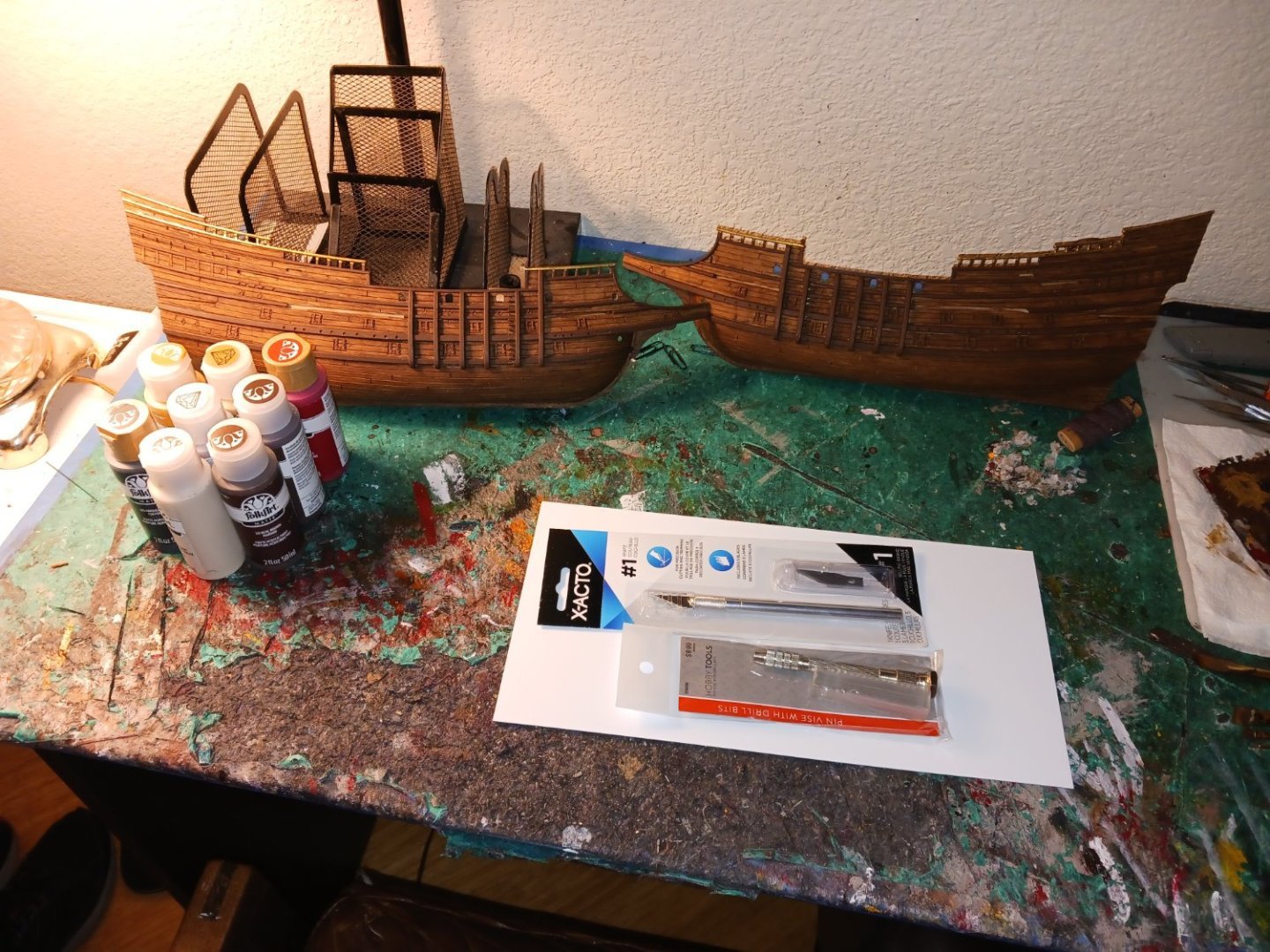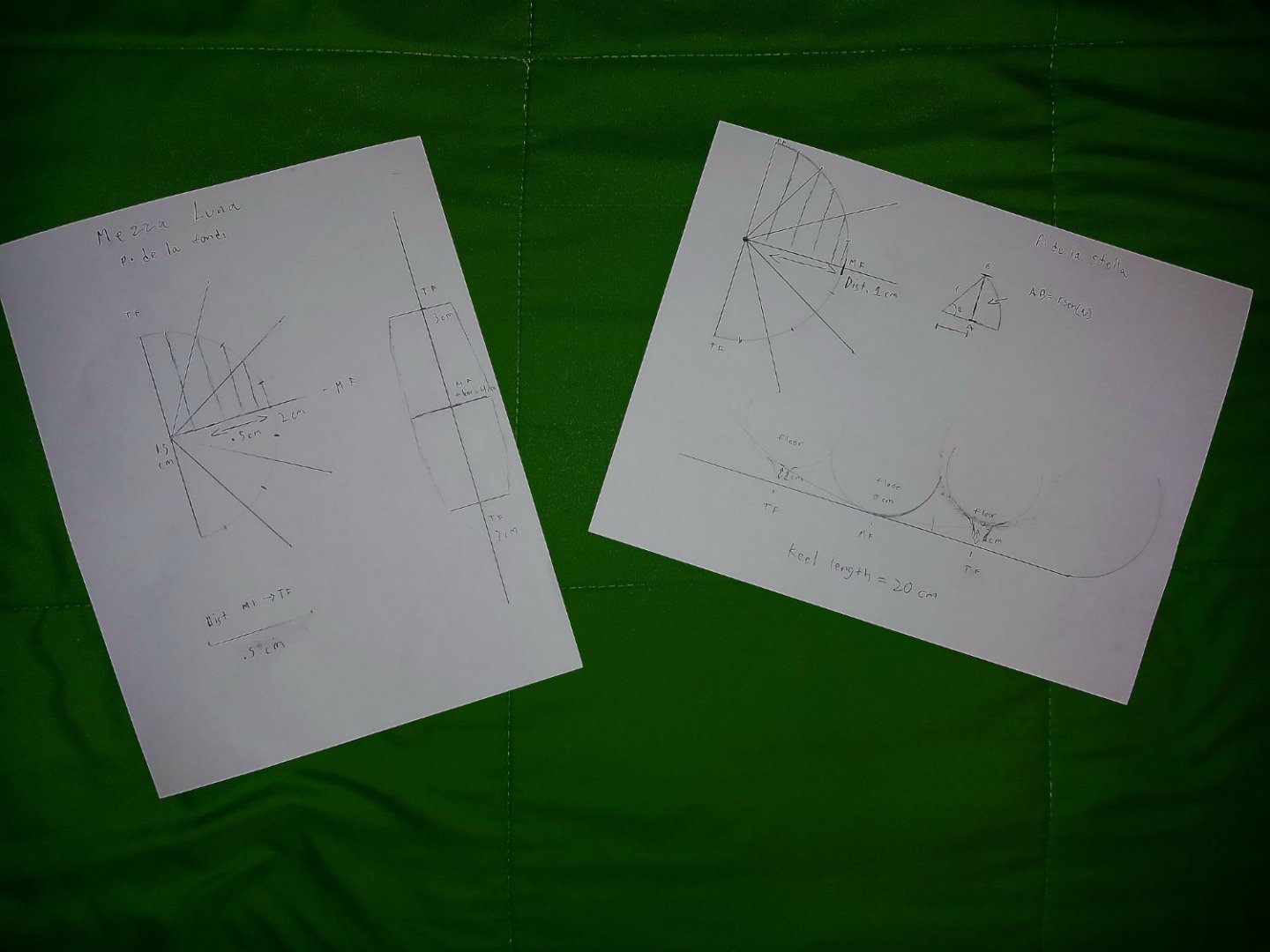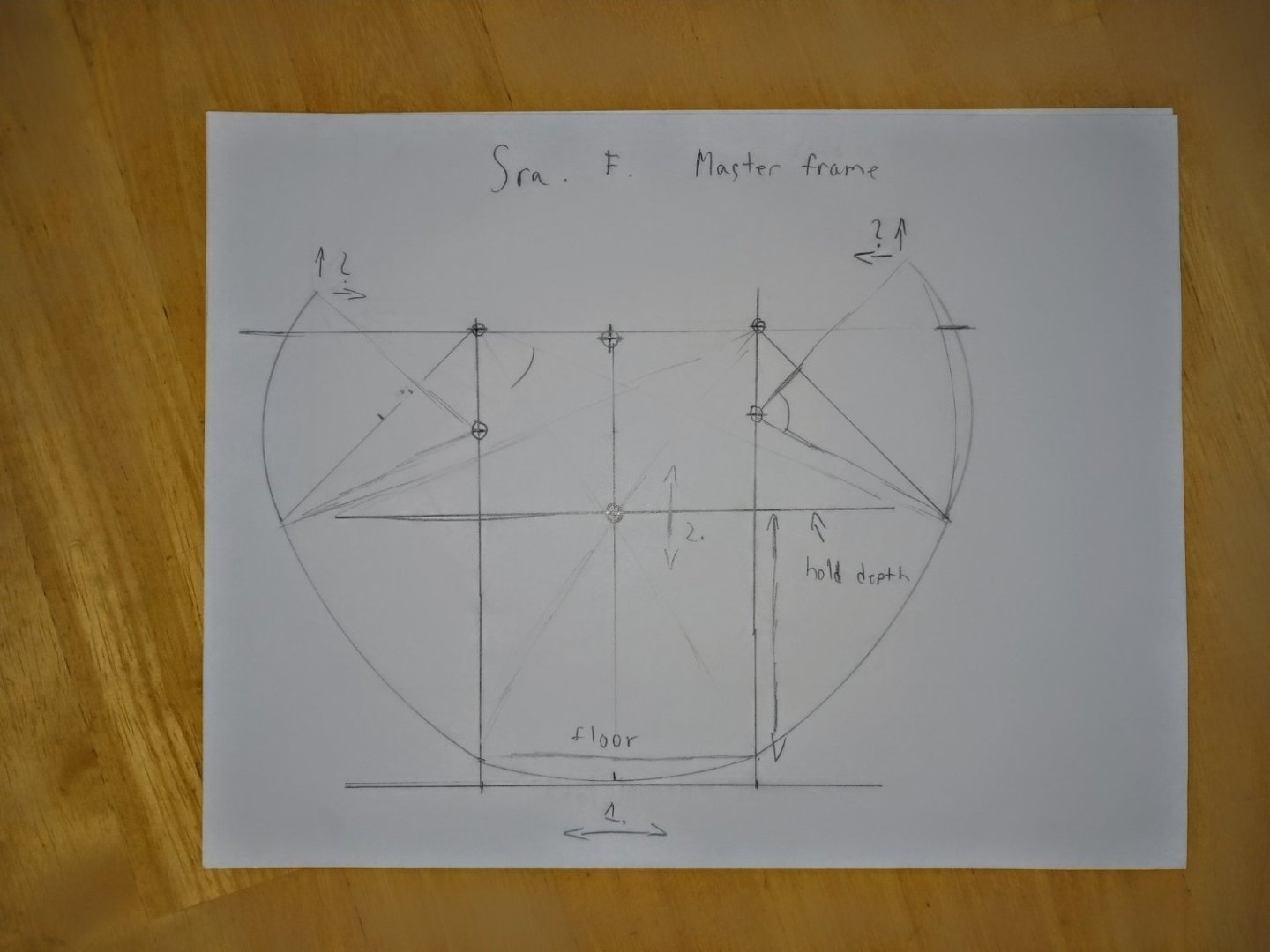-
Posts
1,034 -
Joined
-
Last visited
Content Type
Profiles
Forums
Gallery
Events
Everything posted by Ferrus Manus
-
@woodrat @Louie da fly I designed a relatively convincing keel, sternpost, and two different designs for a stempost. I am thinking i will likely lean towards the larger of the two stemposts, as the actual Mataro carrack has a relatively large stempost. I have not yet figured out how i want to go about achieving the sheer on the deck. This will determine the sheer on the forecastle, and thus the arc of the stempost semicircle. First, i will have to extend the line that is three inches above the bottom of the keel forward to cut off the arc of the stempost. We will then use the ends of this line as they relate to the keel as the tops of the sheer. The base of the sheer will be a distance, likely half a centimeter, under the middle of the line. The sheer will be extended forward to the outermost part of the stempost, thus creating a convincing sheer. The ribbands will do most of the work between the tail frames and stem/stern for me.
- 72 replies
-
I looked at the part where he designs those timbers. A design is shown, but the question that remains is how he got to the conclusions he did, and how i should get to the same, or different conclusions as well.
- 72 replies
-
Another question for the experts: when designing a sternpost and stempost, what angles and circles would be used, and how would one use them? I am at a loss as to how to mathematically design a stem and stern post. Should i do it by eye, on paper, or should i use the shipwright's mathematical approach?
- 72 replies
-
I have a theory about the sheer on the Mataro Carrack: I believe the shipwright used the Mezza Lune incorrectly. The Master Shipwright is supposed to have the bottom of the sheer at the master frame, and work outwards to the tail frames using the Mezza Lune. I believe the shipwright in charge of the Mataro erroneously put the bottom of the sheer at a tail frame, due to the fact that it's about 2/3 down the line of the ship's hull. I think i might just calculate the sheer by using the Mezza Lune in relation to the bow and stern posts. This would mean a perfectly geometric sheer, without the need for unnecessary ribbands.
- 72 replies
-
I did explain that the proportions in the first modern artwork seemed wrong, as the ship would have been shorter and a sheer would be present. The artist makes the error of assuming carracks have the same general proportions of small ships in the 18th century. Note the small forecastle and ridiculously elongated midships/sterncastle half-deck.
- 72 replies
-
I know for a fact that the "classic" age of sail mindset invades and permeates modern research and discussions on medieval ships. I do believe Carpaccio is one of, if not the best source for mediterranean carracks c. 1450-1475-ish.
- 72 replies
-
If @Louie da fly had not already compiled this information and did so just for this project, my thanks are immeasurable and i am greatly appreciative. Had he already compiled this beforehand, he is both a madman and a genius, and i know for a fact he helped Woodrat with his build. These extensive Pinterest archives may have been a product of his assistance to the Venetian Carrack build. In any case, i have them now and i am greatly impressed. Most of the photos thereof are of contemporary (or hear-contemporary) depictions of proto-carracks and carracks alike.
- 72 replies
-
This is a modern interpretation of what the Mataro Carrack likely looked like, were it a real ship. Whereas i intend to build a stockier ship (although not unrealistically fat like the Mataro Model itself) which will have one mast and a somewhat shorter midships, the profile build of my model shall look somewhat like that of the Mataro ship. One thing this model fails to show is the sometimes ridiculous sheer of the ships' forecastles. Normally i would attribute this to medieval artists' lack of perspective, it seems like almost every contemporary depiction of carracks have a forecastle that looks somewhat like this: As you can see, all of the carracks (or "proto-carracks" as Steven refers to them) have quite extreme sheers, especially at the forecastles. This is likely accurate to reality, or at least only very slightly exaggerated by medieval artists. We know this because the Mataro Carrack tells a similar story: This rendition shows a profile view relatively accurate to the real model. However, the model itself is very fat and round, in direct contrast to the relatively realistic aft view depicted in the second illustration. The only thing i believe could be more accurate is if the half-deck walls at the aft were at least perfectly vertical, if not having a slight tumblehome. This was necessary to increase the stability of the ship. The aft view also omits the aft transversal timber, that supports the entirety of the upper works of the ship. Unlike Woodrat's ship, this is a Spanish carrack. The Venetian carrack had a perfectly level main deck in relation to the keel, with no sheer. Only the forecastle had any considerable sheer, and not nearly to the degree of the Spanish ships. I am not qualified to judge this, as he did all his research before and during the build. However, the Mataro carrack's sheer presents itself in the main deck. The deck timbers, which protrude through the hull, can be seen curving up at the fore and aft. The point at which the deck is perfectly level seems to be about two-thirds of the way aft of the hull. As for the aft platform, i will likely omit it and replace it with awning timbers. I may possibly do the same for the forecastle, at least aft of the bowsprit. Due to the absence of a foremast, an offset bowsprit would not be necessary.
- 72 replies
-
When you first showed the becalmed main gaff sail, i instantly thought of all the nautical paintings i had seen. The sails look absolutely magnificent, a rare "action scene" portrayed in model form. Surely, your vessel would fit perfectly into a harbor or river painting from the 19th century. On another note, that Fluyt of yours looks like it's coming along nicely! looking forward to seeing it complete.
-
Feel free to participate in the conversation! techniques, advice, and comments would serve a huge purpose. Build logs are meant for everyone to enjoy, not just the builder. Anything you say will be of good use and will serve to further the progression of the build.
- 279 replies
-
- Spanish Galleon
- Imai
-
(and 1 more)
Tagged with:
-
Well, these images should make Kirill happy. I finally got the Antiquing Medium paint, which arrived in the mail yesterday. I applied it to the entirety of the paint job: I also drilled some sheave holes into the hull with my pin vise: I have yet to paint inside the holes. Anyway, that sums up the progress I made yesterday and today. The hull actually looks a little more like wood now.
- 279 replies
-
- Spanish Galleon
- Imai
-
(and 1 more)
Tagged with:
-
...guess not. Are there any other medieval carrack-building manuscripts i can view on the internet? i am sort of looking for a tome equivalent to Matthew Baker's work a century later.
- 72 replies
-
You can easily build a serving machine with spare legos or a similar interlocking system.
-
@kirill4 On a fishing trip? that must be exciting! I am just glad you're too old to be drafted. You're OUR Kirill, not the Kremlin's. Eventually you'll get back home to a (hopefully) warmer city, back to your family, your house, and your wonderful Galleon. Making a model is one thing, teaching someone else to build the same model is something different.
-
Oh, you will have to help me. Like always. If anything, i need to learn how to work with card.
- 279 replies
-
- Spanish Galleon
- Imai
-
(and 1 more)
Tagged with:
-
Where would i be able to view the full Trombetta Manuscript online?
- 72 replies
-
Hopefully i finally figured out how to make an MSW title. Well, this is it. If you're expecting anything like what Kirill did, think again. I am not even half as skilled and talented as he is. This will not quite be an out-of-box build, but it will be close. In the last few days, i have begun painting the hull with the paints Kirill recommended to me: Plaid Folk Art paints. The antiquing medium has yet to arrive. Kirill built a galleon that would have sailed in the era of the Spanish Armada, while the vessel i am building is the "1607" version, i.e. a ship that would have fought in the Dutch Independence. This build should be a very interesting one. I have never built an Imai kit, and i am blown away by the attention to detail and the quality of their molding. This is the hull being painted, as well as the new toys i bought to aid in her construction: The fields, wales, and futtock riders are done, as well as the gold trim at the top.
- 279 replies
-
- Spanish Galleon
- Imai
-
(and 1 more)
Tagged with:
-
I hope Woodrat got to see this vast wealth of knowledge you have amassed. You really get around on Pinterest, don't you?
- 72 replies
-
This will prove immensely valuable during the build and research. I already looked at the many photos Woodrat posted in his log for the Venetian ship, but this will also be of great use to me. What i plan to do at some point is draw a keel and master frame at scale, likely in Inkscape. I am also working on another build right now, the log for which is about to go up.
- 72 replies
-
I checked out both builds of the Amati ship. I intend to make a ship based on the Mataro, however, it will be much thinner and have slightly different lines. Maybe, at one point, we will both build our scratch-builds together and "borrow" techniques and ideas. My ship will be in either 1/32 or 1/28 scale. Large enough for everything to be easier to work with, combined with the fact that i wanted the model to be about 3 feet long.
- 72 replies
-
These are the diagrams i have made thus far, in relation to various nautical concepts and design elements of the framing of the vessel:
- 72 replies
-
It was recommended i make an actual research log for this by @Louie da fly. I am doing research for a Spanish carrack based on the Mataro ship, basically researching for a future scratch-build of a realistic single masted, 60-70 foot long carrack from about 1450 (NOT a votive model). Much deliberation has been done between myself, Louie, and @woodrat. Stay tuned for more tomfoolery!!
- 72 replies
-
1/96 and 1/100 is around my default, but as you know, i am doing the research for a 1/32 build.
- 739 replies
-
- Tudor
- restoration
-
(and 4 more)
Tagged with:
About us
Modelshipworld - Advancing Ship Modeling through Research
SSL Secured
Your security is important for us so this Website is SSL-Secured
NRG Mailing Address
Nautical Research Guild
237 South Lincoln Street
Westmont IL, 60559-1917
Model Ship World ® and the MSW logo are Registered Trademarks, and belong to the Nautical Research Guild (United States Patent and Trademark Office: No. 6,929,264 & No. 6,929,274, registered Dec. 20, 2022)
Helpful Links
About the NRG
If you enjoy building ship models that are historically accurate as well as beautiful, then The Nautical Research Guild (NRG) is just right for you.
The Guild is a non-profit educational organization whose mission is to “Advance Ship Modeling Through Research”. We provide support to our members in their efforts to raise the quality of their model ships.
The Nautical Research Guild has published our world-renowned quarterly magazine, The Nautical Research Journal, since 1955. The pages of the Journal are full of articles by accomplished ship modelers who show you how they create those exquisite details on their models, and by maritime historians who show you the correct details to build. The Journal is available in both print and digital editions. Go to the NRG web site (www.thenrg.org) to download a complimentary digital copy of the Journal. The NRG also publishes plan sets, books and compilations of back issues of the Journal and the former Ships in Scale and Model Ship Builder magazines.


